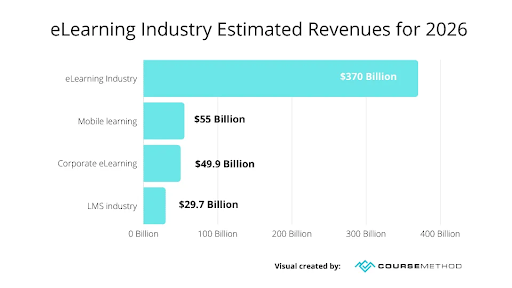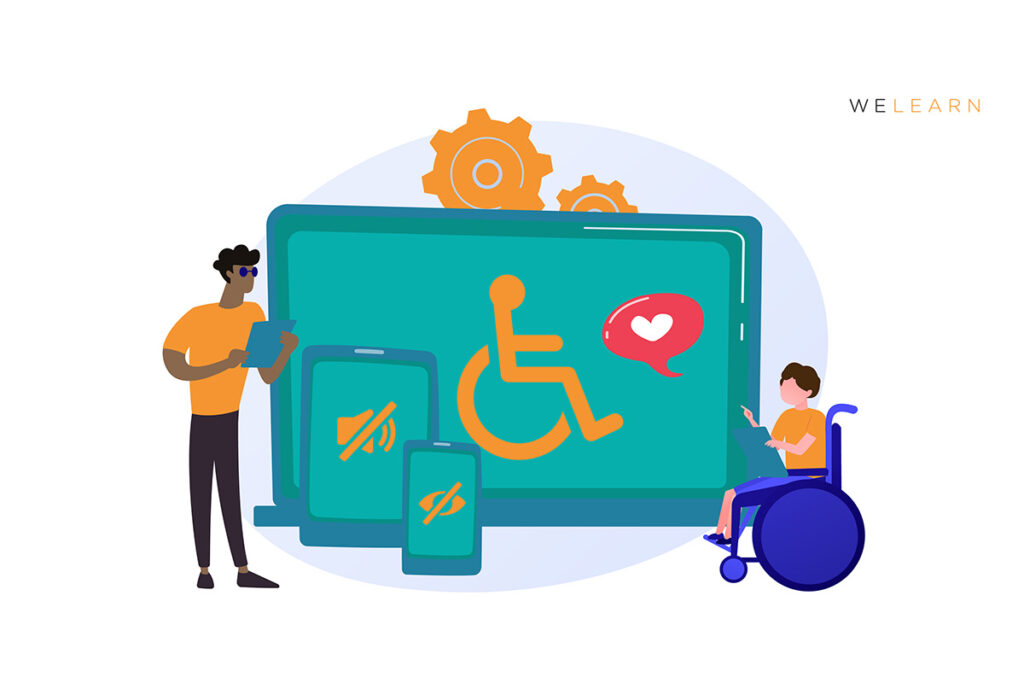Why care for inclusive learning?
Here’s a short story
Mark had been working at the company for a few months, and while he was excited to be part of the team, he found it difficult to keep up with the pace of learning.
The company had invested in different eLearning courses with some great engaging content, but they didn’t seem to be helping Mark…
The thing is that he struggled with visual cues.
The manager was disappointed with him, and he didn’t have a chance to explain himself before getting fired!
THE END
****
Ok, that last part may have been added for dramatic purposes, but you get the idea.
Inclusivity and accessibility in learning are vital aspects of modern education and training.
It refers to creating an environment that is conducive to learning for everyone, regardless of their visible or invisible challenges.
An inclusive learning environment provides an equal opportunity for everyone to learn and grow.
In the past, traditional methods of teaching focused on the knowledge and skills of all learners rather than taking into account the unique needs and experiences of each individual.
If it’s good enough for one, it’ll be good enough for all!

However, with proper inclusive learning environment strategies, trainers are encouraged to think beyond this and create an environment that is welcoming and inclusive for everyone.
In this blog post, we’ll look at the importance of inclusive and accessible learning and how to ensure that all learners are able to access and understand the material.
Why Focus On Inclusivity And Accessibility?
Did you know that the value of the eLearning market will (is expected to) grow to $320 billion by 2025?
Well, the thing is that not everyone learns in the same way.
For example, some individuals may have difficulty understanding written instructions, while others may struggle with visual or auditory cues.
That’s why it’s important to provide as many methods of instruction as possible in eLearning courses.
The educational and training landscape has changed drastically in recent years.
With the rise of online courses and the adoption of new technologies, the way we learn has evolved.
Unfortunately, this evolution has not been inclusive of everyone’s needs.
There are many people who have invisible challenges or disabilities that may be impacted by the language they see in some courses.
That’s why it’s important to ensure that the content used in your courses is inclusive and respectful of all employees or learners.
By creating an environment in which everyone feels welcome and respected, your learners are more likely to engage with the material and feel comfortable expressing themselves.
4 Inclusive Learning Environment Strategies
In the modern world, online learning has become the norm.
Recent data suggests that 93% of companies plan to introduce (free or paid) elearning to further develop their employees’ skills.
As a result, the way we design our eLearning courses needs to be inclusive and accessible for everyone.
This means that those with “disabilities” or lower literacy levels must be considered.

Here are four ways to make language accessible and inclusive in eLearning.
1. Consider Different “Literacy” Levels
When designing your course, it is important to consider the different literacy levels of your learners. While it is important to challenge your learners, you need to ensure they can understand the content. Sometimes “older” employees (those who’ve been with the company longer) may understand the technical language better than the newbie you just hired.
2. Use Non-Discriminatory Language
It is essential to ensure that your language is non-discriminatory when creating an inclusive learning environment. Words and phrases that are culturally insensitive, sexist, or otherwise offensive should be avoided. This includes language related to race, gender, age, sexual orientation, religion, and ability.
3. Optimize Content For Different Platforms
Different platforms, such as mobile and desktop, may have different requirements for accessibility. To ensure that everyone can access your content, you should optimize it for different platforms. This may include using responsive design, ensuring that images and videos are properly optimized, and using accessible fonts and color schemes. Also, you can’t use the word “Click this” for those who are using their phones. “Select this” would be more correct, so be mindful of the language as well.
4. Make Content Accessible For Users With Disabilities
It is important to ensure that your content is accessible to users with disabilities. This may include using alternative text for images, providing transcripts for audio and video content, and using headings, lists, and tables to structure the content. Additionally, you should include audio descriptions for images, videos, and other visual elements.
The Bottom Line
In the modern workplace, companies must take a proactive approach to create an inclusive learning environment.
By fostering inclusive learning, companies can empower their employees and create an environment where everyone can feel respected and valued.
So, one of the most powerful ways of creating an inclusive learning environment is through using inclusive language in your elearning courses.
When language is used in a respectful, inclusive way, it can help create a sense of belonging and acceptance for all employees.
ANNND it makes your training more effective as a result.
This is an important step towards creating an organizational culture that is truly welcoming and respectful of all employees.
To learn more about online learning, click here.

